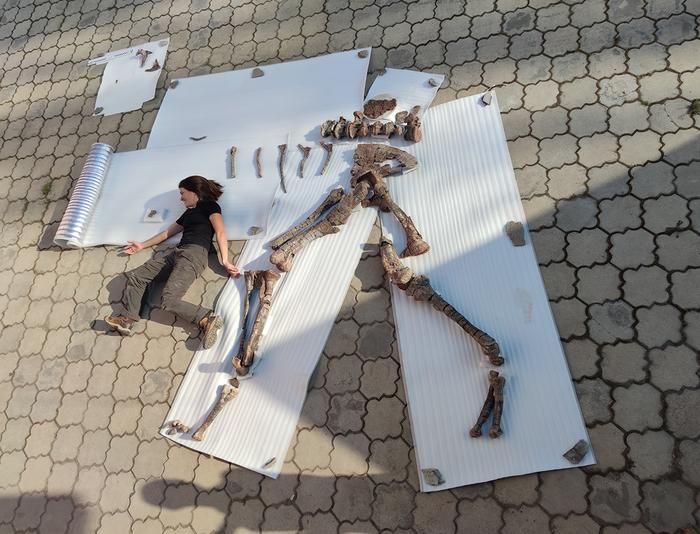A new large predatory dinosaur with a bizarre brow has been unearthed in Central Asia, the first ever discovered in the region. The strange-looking species is a theropod – making it a distant relative of Tyrannosaurus Rex – and roamed what is now Kyrgyzstan approximately 165 million years ago.
Alpkarakush kyrgyzicus – named after a giant mythological bird and the Kyrgyz Republic where it was found – is the first theropod dinosaur found in Kyrgyzstan. It is also the first large Jurassic predatory dinosaur ever unearthed between central Europe and East Asia – a huge region that until now had been bereft of such big-bodied beasties.
The fossilized remains were discovered in 2006 in the Balabansai Formation, which dates to the Middle Jurassic some 165 million years ago. In the 17 years following its discovery, paleontologists dug up skull bones, vertebrae, fragments of pectoral girdle and forelimbs, and an almost complete pelvic girdle and hindlimb.

The anatomically correctly arranged skeletal parts of Alpkarakush kyrgyzicus with excavation participant Alexandra Fernandez as a size comparison.
Image credit: Oliver Rauhut, SNSB
The partial skeleton has even provided us some clues as to what this new dinosaur might have looked like. According to the study authors, Alpkarakush was around 7-8 meters (23-26 feet) long and had an “extremely developed orbital brow on the postorbital”. Essentially, it had a large “eyebrow” protruding from its skull at the back of the eye socket, which likely once held a horn.
The team also found evidence of a second, slightly smaller specimen of Alpkarakush kyrgyzicus, which they believe may be a juvenile. The original is thought to have been almost adult, at least 17 years old when it died. The fact they were found together offers us a glimpse into the species’ social life, “possibly indicating gregarious behaviour”. Perhaps Alpkarakush traversed the terrain of Central Asia in the Mid Jurassic with prehistoric pals.
“This association suggests that juveniles of Alpkarakush travelled together with adults to at least an early subadult stage,” the study authors write.
The strong-browed species bears a resemblance to other theropods and was particularly similar to the western Chinese dinosaur Sinraptor. The researchers were able to place Alpkarakush in the Metriacanthosauridae, an extinct family of allosauroid theropod dinosaurs that lived from the Middle Jurassic to the Early Cretaceous. As a result, it is closely related to the large predatory dinosaurs that once dominated East Asia.
It’s possible, the researchers hypothesize, that metriacanthosaurids and other theropods originated in Southeast Asia, before migrating to other continents via Central Asia and Europe.
“Although the affiliation of Alpkarakush with the metriacanthosaurids is not necessarily a surprise, this discovery closes a huge gap in our knowledge of the Jurassic theropods. It leads us to important new insights into the evolution and biogeography of these animals,” Professor Oliver Rauhut, from the Bavarian Collection of Paleontology and Geology in Munich and first author of the study, said in a statement.
The study is published in the Zoological Journal of the Linnean Society.
Source Link: Distant T. Rex Cousin With Weird "Eyebrow" Stalked Kyrgyzstan 165 Million Years Ago